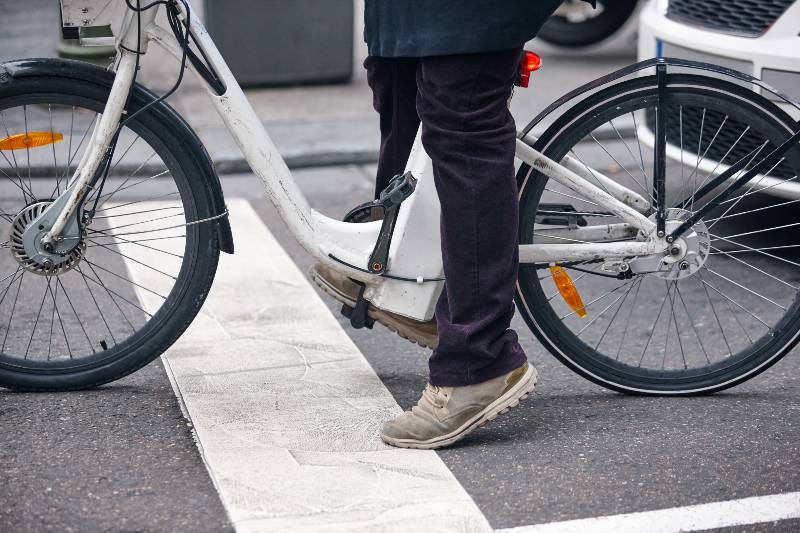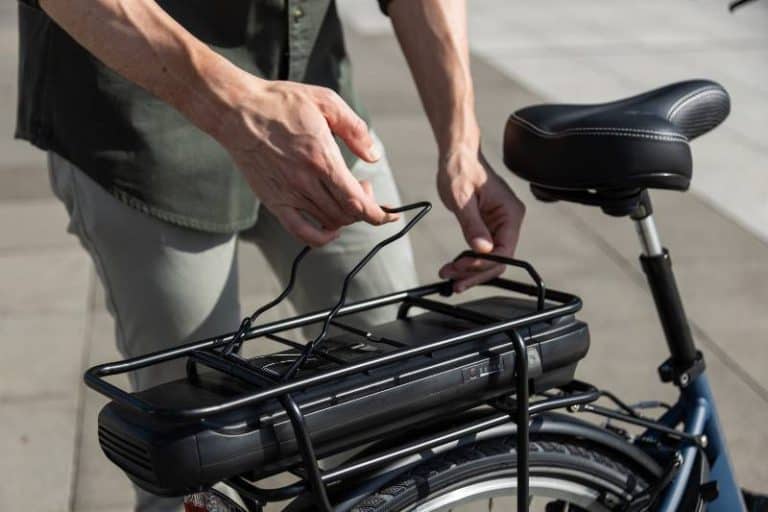City Commuting: Choosing the Right Electric Bike
Electric bikes are becoming increasingly popular among city commuters due to their many benefits. They are eco-friendly, cost-effective, and provide a convenient mode of transportation. With the rising popularity of electric bikes, there are now more options than ever before, making it important to choose the right one for your specific needs. In this guide, we’ll explore the benefits of using electric bikes for city commuting, the importance of choosing the right electric bike, and what factors to consider when making your selection. By the end, you’ll have a better understanding of how to choose the right electric bike for your daily commute in the city. Let’s dive in!
When selecting the perfect distance for your commute via e-bike, ensure you consider crucial factors like terrain, distance covered, and the maximum assistance mode you’ll use. Moreover, search for e-bikes with ample battery capacity to transport you to and from your work and relevant trips during the day.
Key Takeaways
- Before choosing an electric bike for city commuting, consider factors such as your commute distance, terrain, fitness level, and desired assistance level. This assessment will help you narrow down the options that best suit your requirements.
- Familiarize yourself with the key components of electric bikes, including motor types and power, battery capacity and range, frame materials and designs, and brake and gear systems.
- In addition to the core components, factor in considerations such as safety features and accessories, warranty and customer support, and reviews and recommendations from reliable sources.

Assessing Your Needs
When deciding on an electric bike, it’s important to think about your commute distance and the terrain. Different electric bikes are designed for different purposes, so make sure you choose one with the right capabilities. If you’ve got a long way to go, a bike with a higher battery capacity will keep you cruising without battery issues.
Similarly, if you have to tackle steep hills or rough terrain on your commute, you’ll need an electric bike with a powerful motor and sturdy frame to handle the challenge.
Figuring out the features you need in an e-bike is as simple as assessing your commute distance and terrain. This will help you narrow down your options and pick an electric bike that’s best suited for your needs. Selecting the right e-bike for your commute distance and terrain guarantees a safe, cozy, and enjoyable ride every time.
Considering weight and portability
The weight of a bike can make or break your ride. A heavier bike can be a nightmare to pedal and maneuver, especially when scaling uphill or navigating through traffic. It affects range as well since heavier bikes need more energy to move and come with shorter battery life. Remember, weight counts!
Another factor to consider is portability. If you’re planning on transporting your bike frequently, a lighter and more compact option might suit you best. This will make it easier to carry and stash away, especially if you live in a city and need to take your bike on public transport or store it in a cramped flat.
Considering weight and portability can also impact the cost of the bike. Generally, lighter and more portable bikes tend to be more expensive due to the materials used and the technology required to make them. However, it is important to weigh the cost against the convenience and practicality of the bike for your individual needs.
But hey, here’s a tip: if you’re checking out electric bikes, think about weight and portability, so you can pick one that’s comfy, practical, and works with your lifestyle.
Understanding your fitness level and desired assistance level
When it comes to choosing your electric bike, don’t forget to factor in your fitness level and how much support you want from the motor. If you’re not the fittest person around, an electric bike is perfect to get you started, helping you cycle for longer with motor support that makes hills and endurance less daunting. If you’re already a cycling pro, you probably won’t need as much help from the electric motor.
Different electric bikes provide varying degrees of assistance. Some offer little push, while others give a lot. Think about how much help you want from the electric motor. If you’re looking to get a good workout and use the motor just a bit, then a bike with minimal assistance might be best. If you rather let the electric motor do much of the work, then consider one with tons of assistance.
Understanding Electric Bike Components
Motor types and power
When it comes to understanding electric bike components, two important factors to consider are motor types and power. The first one is the motor type. There are two main types of motors used in electric bikes – hub motors and mid-drive motors. Hub motors are located in the front or rear wheel hub and provide direct power to the wheel. Mid-drive motors are located near the pedals and provide power through the bike’s chain. Hub motors are generally simpler and less expensive, while mid-drive motors offer better balance, efficiency, and performance on hilly terrain.
The second one to understand is the power of electric bikes. Electric bike motors are rated in watts, which indicates the amount of power they can produce. The higher the wattage, the more powerful the motor. Electric bikes typically have motors ranging from 250 watts to 900 watts. Lower-wattage motors are suitable for flat terrain and lighter riders, while higher-wattage motors are better for hilly terrain and heavier riders.
It’s important to note that the power of the motor is not the only factor that determines the speed and performance of the electric bike. Other factors such as battery capacity, weight, and many more.
Battery capacity and range
The battery capacity of an electric bike refers to the amount of energy that the battery can store. It is usually measured in watt-hours (Wh) or ampere-hours (Ah). The higher the battery capacity, the more energy it can store, which means you can ride your electric bike for a longer distance before needing to recharge the battery.
On the other hand, the range of an electric bike refers to the distance it can travel on a single charge. The range of an electric bike depends on several factors such as the battery capacity, level of pedal assist, terrain, and rider’s weight. Generally, a higher battery capacity will result in a longer range, but other factors such as using higher levels of pedal assist or riding on hilly terrain can drain the battery faster and reduce the range.
It’s important to note that the range advertised by the manufacturer may not always be accurate, as it’s based on ideal conditions. Therefore, it’s always a good idea to test-ride an electric bike and see how far you can go on a single charge before making a purchase.
Frame materials and designs
The frame of an electric bike can be made from a variety of materials, including aluminum, carbon fiber, steel, and titanium. Each material has its own unique characteristics and benefits.
- Aluminum: Aluminum is a popular choice for electric bike frames as it is lightweight, strong, and affordable.
- Carbon Fiber: Carbon fiber frames are lightweight, strong, and offer excellent vibration damping. However, they can be expensive.
- Steel: Steel frames are durable, strong, and offer a smooth ride. However, they can be heavy.
- Titanium: Titanium frames are lightweight, strong, and durable. Since they are rare due to the fact that they are also hard to work with, they can be very expensive.
Electric bike frames can also come in different designs, including step-through frames, diamond frames, and folding frames.
- Step-Through Frames: Step-through frames have a low-top tube that makes it easier to mount and dismount the bike. They are a popular choice for riders who have limited mobility or prefer a more upright riding position.
- Diamond Frames: Diamond frames have a traditional bike frame design with a high-top tube. They are a popular choice for riders who want a more aggressive riding position.
- Folding Frames: Folding frames, electric commuter bikes, allow the bike to be easily stored and transported. They are a popular choice for commuters or riders who have limited storage space.
Brake and gear systems
Electric bikes can have different types of brake systems, including hydraulic disc brakes and rim brakes. Disc brakes are the most common type of brake system found on electric bikes. They use a rotor and caliper to apply pressure to the wheel and slow it down. Disc brakes are powerful, reliable, and work well in wet conditions. On the other hand, rim brakes use pads that grip the rim of the wheel to slow it down. It is much cheaper and lighter than the disc brakes. Although, rim brakes are less powerful than disc brakes and can wear down the rim over time.
Electric bikes have a range of gear systems available, including both derailleur and hub gears. Derailleur gears are the most prevalent system used on electric bikes and work by using a chain that moves between gears of varying sizes. This chain movement is what facilitates adjustments to the gear ratio for a smoother ride.
Derailleur gears are lightweight, efficient, and provide a wide range of gears. Hub gears, on the other hand, are a type of gear system where the gears are contained within the rear hub of the wheel. They are less common on electric bikes but can still be found on some models. Hub gears are more durable and require less maintenance than derailleur gears, but they are heavier and provide a more limited range of gears.
If you’re looking to buy an e-bike but don’t know where to start, I suggest checking out the beginner’s buying guide available here on our website. This article covers everything from choosing the right e-bike for your needs to understanding the various features and specifications that you might encounter. It’s a great resource for anyone who is new to the world of electric bicycles and wants to make an informed purchase decision. So why not give it a read and see what you can learn?
Choosing the Right Electric Bike
Researching different electric bike models
Electric bikes can vary significantly in terms of features and components. For example, some electric bikes have a higher battery capacity, which means they can travel further on a single charge. Other electric bikes may have a more powerful motor, which means they can handle steep hills. By researching different electric bike models, you can find the one that best suits your needs and preferences.
Aside from that, reading customer reviews of different electric bike models can provide valuable insights into the performance, reliability, and overall satisfaction of the bike. By reading reviews, you can get a better sense of how the bike performs in real-world conditions and whether it’s a good fit for your needs.
Test riding and considering the comfort
Test riding an electric bike is crucial because it allows you to experience the bike’s performance, handling, and overall feel. Electric bikes can vary significantly in terms of motor power, battery life, and overall ride quality. By test-riding different electric bike models, you can get a better sense of how they perform in real-world conditions and choose the one that feels the most comfortable and enjoyable to ride.
Comfort is also a critical factor to consider when choosing an electric bike. Riding an uncomfortable bike can lead to discomfort, pain, and fatigue, which can detract from the overall riding experience. When choosing an electric bike, consider factors such as the bike’s frame design, saddle, and handlebars. Look for a bike that has a comfortable, ergonomic design and fits your body size and riding style.
Additionally, consider the type of riding you plan to do. If you plan to use your electric bike for commuting or long-distance rides, look for a bike that has features such as a suspension fork or seat post that can help absorb shock and provide a smoother ride.
Evaluating the bike’s durability and maintenance requirements
Selecting the appropriate electric bike requires careful evaluation of its endurance and maintenance needs. As electric bikes tend to be a significant investment, it’s pivotal to choose one that can endure regular wear and tear for numerous years. Scrutinize factors such as the bike’s frame material, the quality of the components, and the general build quality to ensure that it can withstand any conditions you encounter on the road.
Additionally, evaluating the bike’s maintenance requirements is important because it can impact the overall cost of ownership. Some electric bikes require more maintenance than others, and this can add up over time. Look for a bike that has low maintenance requirements and is easy to repair if necessary. Consider factors such as the battery life, the ease of replacing components, and the availability of replacement parts.
By taking these two into consideration, you can ensure that you choose a bike that will last you for years to come and is easy to maintain and repair, which can save you time and money in the long run.
Considering budget and value for money
Electric bikes can vary significantly in price, and it’s essential to find a bike that fits within your budget and provides good value for your money. Consider factors such as the bike’s features, components, and overall build quality when evaluating its value for money.
Additionally, keep in mind that the initial cost of the bike is just one aspect of its overall cost of ownership. Electric bikes require ongoing maintenance, and the cost of replacement parts and repairs can add up over time. Look for a bike that has low maintenance requirements and is easy to repair if necessary.
It’s also important to consider the potential savings that an electric bike can provide. For example, an electric bike can save you money on transportation costs, such as gas and parking fees. It can also provide health benefits by encouraging you to get more exercise and spend more time outdoors.
Additional Considerations
Safety features and accessories
Electric bikes have several safety features and accessories that can be used to improve the safety of riders. Some of the safety features include helmets, lights, mirrors, and locks. Helmets are essential for protecting the rider’s head in case of an accident, and there are e-bike-specific helmets with additional tech and design features to better cope with the higher speeds and forces involved in e-biking. Lights are also important for visibility, especially at night, and there are e-bike-specific lights that can be powered by the bike’s battery.
Mirrors can be used to improve the rider’s visibility and awareness of their surroundings, and there are handlebar-mounted mirrors designed for use with e-bikes. Locks are also important for securing the bike when parked, and there are e-bike-specific locks that can be used to secure the battery and motor as well as the frame.
Other accessories that can improve the safety of riders include fenders, which can help keep the rider and the bike clean and dry in wet conditions, and racks, which can be used to carry cargo and improve the stability of the bike. Panniers and baskets can also be used to carry cargo, and there are e-bike-specific designs that can be mounted on the bike frame or the rear rack Inflators and repair kits can be used to fix flat tires, which are a common problem for all bikes, and there are portable designs that can be carried on the bike.
Warranty and customer support
Electric bike manufacturers typically offer warranties on their products to protect customers from defects and other issues. The length and terms of these warranties can vary widely depending on the manufacturer and the specific model of the bike. For example, the Electric Bike Company offers a limited warranty on its bikes that covers the paint for only 30 days, the motor for 10 years, and the battery for a period of five years from the date of purchase. Evelo, on the other hand, offers a 4-year, 20,000-mile warranty on its electric bikes, which is double the industry average.
In addition to warranties, many electric bike manufacturers offer customer support services to assist customers with any issues they may encounter. These services can include phone and email support, as well as online resources such as FAQs and user manuals. Some manufacturers may also offer repair and maintenance services for their bikes, either directly or through authorized dealers.
When purchasing an electric bike, it is important to carefully review the warranty and customer support policies of the manufacturer to ensure that you are fully protected in case of any issues with your bike. It is also a good idea to research the reputation of the manufacturer and read reviews from other customers to get a sense of their experience with the company’s products and support services.
Reviews and recommendations
There are many websites that provide reviews and recommendations for electric bikes. Some of the most popular include Tom’s Guide, Bicycling, Consumer Reports, and Outdoor Gear Lab. These sites offer detailed reviews of various electric bike models, including their features, performance, and overall value. They also provide recommendations based on factors such as price, style, and intended use.

Right Electric Bike For Commuting In The City FAQs
What are the benefits of using an electric bike for commuting in the city?
Electric bikes are amazing for getting around the city! Not only do they let you zip faster and further with less work, they also make dodging traffic a breeze. Plus, electric bikes are great for the planet – no emissions, no gas money, no problem. And the best part? You’ll get plenty of exercise along the way, without breaking a sweat! They’re fun, they’re easy, and they’re perfect for anyone!
How do I determine the appropriate electric bike for my commute distance and terrain?
According to REI Co-op, the type of electric bike you choose will depend on how far you’ll be traveling and the terrain you’ll be riding on. If you’ll be riding long distances, a bike with a larger battery and longer range may be necessary. If you’ll be climbing hills, a bike with a more powerful motor may be necessary.
It’s also important to consider the type of bike you prefer. Electric bikes come in a variety of styles, including road bikes, mountain bikes, and hybrid bikes. Choose a style that suits your needs and preferences.
When shopping for an electric bike, test-ride several different models to find the one that feels the most comfortable and suits your needs. Look for a bike with a comfortable saddle, good brakes, and responsive handling.
What factors should I consider when choosing an electric bike for city commuting?
So, you’re on the hunt for an electric bike to zip around the city? Great choice! Here are some things to consider: range, motor power, comfort, durability, portability, safety features, and price. Aim for a battery that fits your commute, a strong motor for city riding, comfy saddles and handlebars, a sturdy frame, and lights/reflectors to stay safe. Most importantly, don’t forget to balance the budget with value for money.
How can I assess the motor power and battery range of an electric bike?
When evaluating an electric bike’s motor performance, wattage is key. Generally speaking, a higher-wattage motor will deliver more power and superior performance. To get a true sense of the motor’s power and acceleration, take it for a test ride.
To determine the battery range of an electric bike, you can examine its battery capacity measured in watt-hours (Wh) or ampere-hours (Ah). Typically, a higher-capacity battery translates to a longer range. Additionally, manufacturers usually provide estimations on a bike’s range, although this may vary based on factors like terrain, the rider’s weight, and riding style. To gain a more accurate understanding of the bike’s range, test-ride it along a route similar to your daily commute.
What are the important components to look for in an electric bike?
When choosing an electric bike and even the best electric commuter bike, there are several important components to consider. The motor is the heart of the electric bike and should be powerful enough to handle your commute distance and terrain. The battery capacity should also be considered to ensure that you can make it to your destination without running out of power.
For optimal safety and performance, several aspects of an electric bike should be considered. The frame must be able to withstand the added weight of the motor and battery, while the brakes should be responsive and strong. Additionally, the bike’s tires must be suitable for the terrain, with comfortable handlebars and saddle for the rider’s position. Finally, riders should consider accessories like lights, racks, and fenders for added convenience and safety while commuting through the city.
Conclusion
Choosing an electric bike that’s right for commuting in the city is a great way of saving money and reducing pollution. When selecting your electric bike make sure it meets all of your criteria; assess the battery capacity, speed range, materials used, weight, and cost of the product. A few other factors you may want to consider are terrain type and weather conditions when commuting, accessories that come with the bike, as well as any customization options.
Remember to be mindful when making your purchase – take into account what works best for you and think practically about how often you will use the product. If still uncertain where to begin, subscribe to our newsletter for further information. This investment is sure to bring long-term benefits, saving both energy costs and air quality!






